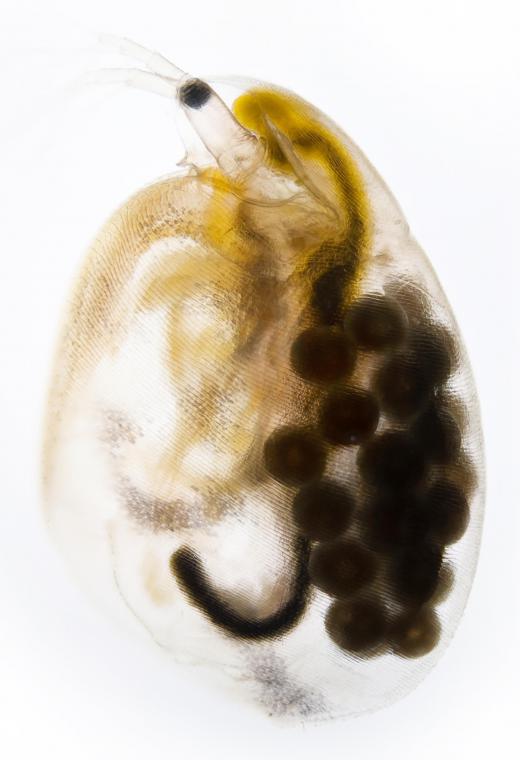What is a Megamouth Shark?
 Michael Anissimov
Michael Anissimov
The Megamouth shark is an extremely rare species of deepwater shark. Only 39 specimens have been sighted, and just three caught on film. The discovery of the Megamouth shark in 1979, when it became caught on a sea anchor of a US Navy ship off the coast of Hawaii, is often hailed as one of the greatest zoological discoveries of the century. Of well-known species, the Megamouth is most closely related to the Basking Shark.
The first Megamouth shark specimen hauled up from the deep measured 14.6 ft (4.46 m) and weighed 1,650 lbs (750 kg). Since then, larger specimens have been found, ranging up to 5.5 m (18 ft) in length and weighing up to 2,679 lb (1,215 kg). As its name suggests, the Megamouth shark has a huge mouth, which it uses to filter the water for organic bits. The Megamouth shark has anatomical features so different than other sharks, it was assigned its own family, Megachasmidae. The Megamouth shark is not the only filter feeding shark — the basking shark and whale shark also employ this feeding mechanism — but it is the only known shark adapted to extremely low depths, which are characterized by sparse food and eternal darkness.

Because the deep sea is practically devoid of nutrients, the Megamouth shark moves slowly and has a fragile skeleton. One Megamouth shark tracked using a locator device proved to swim at an average speed of just 1 mph. Being a filter feeder, the Megamouth has little need for bursts of speed anyway. The slow speed isn't the only major difference between the Megamouth and predatory sharks. Its teeth and tiny nubs, neglected by millions of years of adaptation to the benthic environment. It gathers food using modified gills called gill rakers.
The Megamouth shark is an example of a creature just as fascinating as the various cryptids (such as Bigfoot), but the evidence for its existence is significantly better (it has been photographed up close and even dissected). No one could have suspected its existence beforehand, but in 1979, everyone got a surprise. Because of its rarity and bizarre appearance, the megamouth has been compared to the living fossil fish coelacanth, which was thought to be extinct for 65 million years until it was found in 1938.
AS FEATURED ON:
AS FEATURED ON:











Discussion Comments
In April of 2009, a 13 foot long megamouth shark was caught by a Philippine fisherman. Unfortunately, it died while struggling to get out of the fishing net. It was then taken to Donsoi which is where the World Wildlife Fund is located. They tried to persuade the fisherman not to eat this very rare species of shark. The man ate it anyway. This was the 41st megamouth shark ever recorded in the whole world.
The fisherman butchered the shark and said he cooked it in coconut milk.
Post your comments